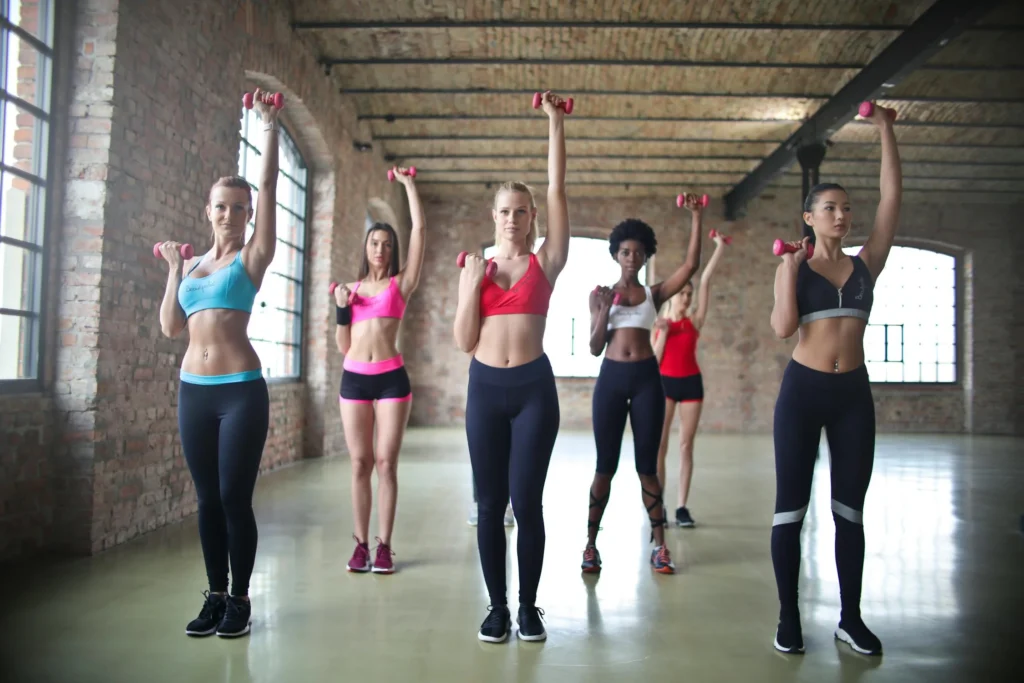In today’s increasingly sedentary world, prioritizing physical activity is more crucial than ever. From boosting mood and energy levels to preventing chronic diseases, the benefits of regular exercise are undeniable. However, the journey to a more active lifestyle can feel daunting. This comprehensive guide will break down practical strategies, addressing common obstacles and offering tailored advice to help you become more physically active and enjoy a healthier, happier you.

Understanding the Importance of Physical Activity
Before diving into the “how,” let’s reinforce the “why.” Regular physical activity offers a wealth of benefits, including:
- Improved Cardiovascular Health: Strengthening your heart and lungs, reducing the risk of heart disease, stroke, and high blood pressure.
- Weight Management: Helping you maintain a healthy weight or lose weight by burning calories and boosting metabolism.
- Stronger Bones and Muscles: Increasing bone density and building muscle mass, reducing the risk of osteoporosis and improving balance.
- Enhanced Mental Health: Reducing stress, anxiety, and depression, improving mood, and boosting self-esteem.
- Increased Energy Levels: Combating fatigue and improving overall energy levels.
- Better Sleep: Promoting deeper and more restful sleep.
- Reduced Risk of Chronic Diseases: Lowering the risk of type 2 diabetes, certain cancers, and arthritis.
- Improved Cognitive Function: Enhancing memory, focus, and overall brain health.
- Increased Longevity: Contributing to a longer and healthier life.
Overcoming Common Barriers to Physical Activity
Many factors can hinder our efforts to become more active. Recognizing these common barriers is the first step to overcoming them:
- Lack of Time: A common excuse, but often a matter of prioritizing and scheduling.
- Lack of Motivation: Finding the inner drive to exercise can be challenging.
- Fatigue: Feeling too tired to exercise can be a vicious cycle.
- Cost: Gym memberships or fitness classes can be expensive.
- Health Concerns: Existing injuries or medical conditions can limit physical activity.
- Lack of Access: Limited access to gyms, parks, or safe walking areas.
- Discomfort or Embarrassment: Feeling self-conscious about exercising in public.
- Lack of Knowledge: Not knowing where to start or what exercises to do.
- Boredom: Finding exercise routines monotonous or unengaging.
- Procrastination: Putting off exercise until “later,” which often never comes.
Strategies for Becoming More Physically Active
Now, let’s explore practical strategies to incorporate more physical activity into your life:
- Start Small and Gradually Increase: Don’t try to overhaul your lifestyle overnight. Begin with small, manageable goals, like walking for 10 minutes a day, and gradually increase the duration and intensity as you get fitter.
- Find Activities You Enjoy: Exercise shouldn’t feel like a chore. Explore different activities until you find something you genuinely enjoy, whether it’s dancing, swimming, cycling, hiking, or team sports.
- Schedule It In: Treat your workouts like important appointments and schedule them into your day. Put them in your calendar and stick to it as much as possible.
- Make it Convenient: Choose activities that are easily accessible and fit into your routine. Walk or cycle to work, take the stairs instead of the elevator, or find a gym close to your home or office.
- Find a Workout Buddy: Exercising with a friend or family member can provide motivation and accountability.
- Set Realistic Goals: Set achievable goals to avoid discouragement. Focus on progress rather than perfection.
- Track Your Progress: Use a fitness tracker, journal, or app to monitor your activity levels. Seeing your progress can be highly motivating.
- Vary Your Routine: Mix up your workouts to prevent boredom and challenge different muscle groups.
- Incorporate Activity into Daily Life: Look for opportunities to be more active throughout the day. Take the stairs, park further away from the store, do chores around the house, or play with your kids or pets.
- Make it a Habit: Consistency is key. The more consistently you exercise, the more likely it is to become a habit.
- Listen to Your Body: Pay attention to your body’s signals and rest when you need to. Don’t push yourself too hard, especially when starting.
- Stay Hydrated: Drink plenty of water before, during, and after exercise.
- Fuel Your Body: Eat a healthy and balanced diet to provide your body with the energy it needs for physical activity.
- Find a Support System: Join a fitness community, online forum, or support group to connect with others who are on a similar journey.
- Reward Yourself: Celebrate your achievements, no matter how small. This can help you stay motivated.
- Don’t Give Up: Everyone has setbacks. If you miss a workout or two, don’t get discouraged. Just get back on track as soon as possible.
- Seek Professional Guidance: If you have any health concerns or are unsure where to start, consult with a doctor or certified personal trainer.
- Break Down Large Goals: If your ultimate goal seems overwhelming, break it down into smaller, more manageable steps.
- Focus on the Benefits: Remind yourself of all the positive benefits of physical activity to stay motivated.
- Make it Fun: Find activities that you genuinely enjoy and that make you feel good.
Tailoring Your Approach to Your Needs
The best approach to physical activity is the one that works best for you. Consider your individual needs, preferences, and limitations when designing your fitness plan.
- For Beginners: Start slowly and gradually increase the intensity and duration of your workouts. Focus on building a consistent routine.
- For People with Health Concerns: Consult with your doctor before starting any new exercise program. Choose low-impact activities that are safe and appropriate for your condition.
- For Busy Individuals: Find ways to incorporate short bursts of activity into your day. Even 10-minute workouts can be beneficial.
- For People Who Dislike Exercise: Explore non-traditional activities like dancing, gardening, or playing active video games.
- For People on a Budget: Take advantage of free resources like online workout videos, community parks, and walking trails.
Making Physical Activity a Lifelong Habit
The key to long-term success is to make physical activity a sustainable part of your lifestyle. This requires a shift in mindset, viewing exercise not as a chore but as an investment in your health and well-being.
- Embrace the Process: Focus on enjoying the journey rather than just the destination.
- Be Patient: It takes time to see results. Don’t get discouraged if you don’t see changes immediately.
- Stay Consistent: Consistency is more important than intensity. Even short, regular workouts are more beneficial than sporadic, intense ones.
- Adapt and Adjust: Be flexible and willing to adjust your routine as needed. Life happens, and you may need to modify your plans from time to time.
- Celebrate Successes: Acknowledge and celebrate your accomplishments, no matter how small.
Conclusion: A Path to a Healthier and Happier You
Becoming more physically active is a journey, not a destination. By incorporating these strategies into your life, you can make exercise a regular and enjoyable part of your routine, reaping the numerous physical and mental health benefits it offers. Remember, it’s never too late to start. Take the first step today, and embark on a path to a healthier and happier you. The most important thing is to find what works for you and to keep moving!





Leave a Reply
You must be logged in to post a comment.